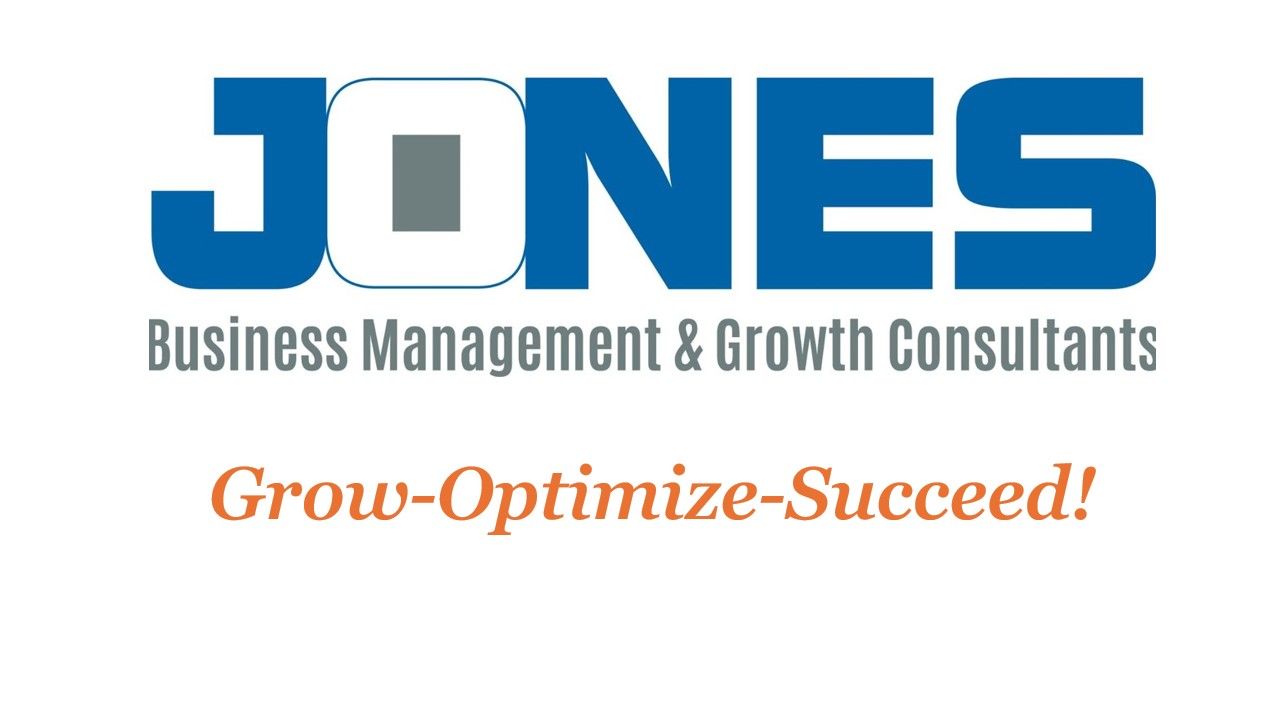Getting Out of the Field and Back Into Strategy Mode
Part 3: Delegation, Accountability, and Leadership

Recap from Parts 1 and 2:
In Part 1 of this blog series, we discussed why business owners often get pulled back into fieldwork, how that hinders long-term growth, and what initial steps you can take to break the cycle. In Part 2, we dove into the importance of creating systems and processes that allow your business to run smoothly without you being involved in every decision. Now, we’re going to wrap up the series by focusing on delegation, accountability, and leadership—key ingredients to building a business that thrives without you having to be involved in the day-to-day operations.
The Importance of Delegation
Let’s start with delegation. By this point, you’ve hopefully put some solid systems and processes in place, which makes delegation much easier. But delegation isn’t just about handing off tasks; it’s about building trust within your team and empowering them to take ownership of their roles.
As a business owner, you might feel like you need to do everything yourself to maintain quality control. However, this mindset can keep you stuck in the weeds, limiting your time for strategic growth. Effective delegation is about identifying the right person for the job and giving them the tools, guidance, and trust to get it done.
1. Identify Tasks You Can Delegate
Start by looking at your day-to-day responsibilities. What tasks are you handling that could easily be completed by someone else on your team? These might include administrative tasks, customer follow-ups, scheduling, or routine service work. The key is to delegate tasks that don’t require your expertise or high-level decision-making.
Think back to Part 2, where we talked about documenting processes. If you’ve already created step-by-step guides for repetitive tasks, delegation becomes much easier because you can pass those tasks off with confidence that they’ll be completed correctly.
2. Match the Right Tasks to the Right People
Effective delegation isn’t about dumping tasks on whoever is available. You need to match tasks with the right people based on their strengths and skills. Take a look at your team and consider each person’s strengths, areas for growth, and capacity. Some employees might excel at customer interactions, while others may be more detail-oriented and better suited for administrative tasks.
Delegating with intention ensures that tasks are handled efficiently and correctly, which ultimately helps your business run more smoothly.
3. Provide Clear Instructions and Set Expectations
Once you’ve identified the tasks to delegate and the right person to handle them, it’s important to provide clear instructions. This is where your documented processes come in handy. When your employees have a clear guide to follow, they’re more likely to complete the task accurately and independently.
Be sure to set expectations as well. Let your team members know what the end goal is, how their performance will be measured, and what the timeline looks like. Clear expectations help prevent misunderstandings and ensure everyone is on the same page.
4. Let Go and Trust the Process
This is the toughest part for many business owners. Once you’ve delegated a task and provided clear instructions, it’s time to let go and trust your team to handle it. Resist the urge to micromanage—if you’ve done the work upfront by creating systems and processes, you should feel confident that your team can handle the work.
By stepping back, you allow your employees to develop their skills and take ownership of their roles, which is essential for building a strong, self-sufficient team.
Accountability: The Glue That Holds It All Together
Delegation works best when there’s a culture of accountability in place. Accountability isn’t about punishment—it’s about creating an environment where everyone understands their responsibilities and is committed to delivering on them. It’s about creating a sense of ownership over their work.
Here’s how to build accountability into your business:
1. Set Clear Roles and Responsibilities
Your team needs to know exactly what’s expected of them. This includes not only the tasks they’re responsible for but also the standards they need to meet. By defining clear roles and responsibilities, you eliminate confusion and ensure that everyone knows their part in making the business run smoothly.
Make sure each team member knows the larger impact of their role. When employees understand how their work contributes to the overall success of the business, they’re more likely to take ownership of their responsibilities.
2. Implement Regular Check-Ins
Accountability doesn’t mean breathing down your team’s necks, but it does mean staying involved and providing support. Regular check-ins—whether they’re weekly meetings or bi-weekly one-on-ones—are a great way to maintain accountability without micromanaging.
During these check-ins, review the progress of delegated tasks, offer feedback, and provide any necessary support or guidance. This also gives your employees an opportunity to ask questions and address any challenges they’re facing. Regular communication fosters trust and ensures that everyone stays aligned with the business’s goals.
3. Encourage a Growth Mindset
Building a culture of accountability is easier when your team embraces a growth mindset. This means encouraging them to see challenges and mistakes as opportunities for learning and improvement rather than as failures.
When employees feel safe to take calculated risks and learn from their experiences, they become more innovative and proactive. This is crucial for long-term growth, as it fosters a culture where employees are continuously improving and striving for excellence.
4. Recognize and Reward Accountability
Don’t forget to recognize and reward accountability when you see it. When employees step up and take responsibility for their roles, it’s important to acknowledge their efforts. This could be as simple as giving them public recognition during a team meeting or offering a more tangible reward like a bonus or extra time off.
When accountability is recognized and rewarded, it becomes a positive cycle that encourages more of the same behavior from the rest of the team.
Leadership: Guiding Your Team Toward Long-Term Success
Now that you’ve set up systems and processes, delegated tasks effectively, and built a culture of accountability, the final piece of the puzzle is leadership. As the business owner, your role is to guide your team and set the direction for the future. Leadership isn’t just about giving orders—it’s about inspiring, motivating, and supporting your team to achieve their best work.
Here are a few key elements of effective leadership:
1. Lead by Example
Your team looks to you for guidance, and they’ll follow your lead. If you’re committed to accountability, delegation, and growth, your team will be, too. If you expect your team to take ownership of their roles, you need to demonstrate that same level of commitment in your own work.
2. Foster Open Communication
Great leaders encourage open, two-way communication. This means being approachable and willing to listen to your team’s ideas, concerns, and feedback. When your team feels heard, they’re more likely to engage and take ownership of their work. Open communication also helps to identify and address potential issues before they become major problems.
3. Empower Your Team
Effective leaders empower their team to take initiative and make decisions within their sphere of influence. This is where the systems and processes you’ve put in place come into play—when your team has clear guidelines to follow, they can make decisions confidently without needing your constant approval.
Empowerment builds confidence and allows your team to grow into their roles, making them more effective contributors to the business’s success.
4. Focus on Continuous Improvement
As a leader, you should always be looking for ways to improve both your business and your leadership skills. This might mean refining your systems, seeking out professional development opportunities for yourself and your team, or simply staying open to feedback and new ideas.
By focusing on continuous improvement, you create a business that’s not only successful today but also positioned for long-term growth.
Conclusion: Putting It All Together
Breaking free from the day-to-day fieldwork in your business is a journey. It starts with building the right systems and processes, delegating effectively, fostering accountability, and stepping into a leadership role. When you master these elements, you’ll find that your business runs more smoothly, your team is more empowered, and you have the time and space to focus on growing your business for the future.
It’s time to step back, trust your team, and take your business to the next level.
Want More? Exclusive Content Available on Skool!
If you’ve found this blog series helpful in taking your business to the next level, I’ve got some exclusive content just for you. The journey doesn’t end here. Over on Skool, I’ve posted the 4th and final installment of this series where we’ll dive even deeper into the next steps for your business.
In this exclusive post, we’ll cover how to evaluate your systems and processes and use that information to define what the ideal employee looks like for each role. This isn’t about firing your current team, but about planning for the future and hiring the right people as openings arise.
Don’t miss out on this valuable content! Join me on Skool to access the 4th installment and continue building a stronger, more efficient business.
Head over to Skool now and let’s keep the momentum going! https://www.skool.com/jonesbusinessgrowthchannel
#LeadershipDevelopment #DelegationSkills #TeamAccountability #BusinessGrowth #ServiceIndustrySuccess #EntrepreneurJourney #SmallBusinessLeadership
















